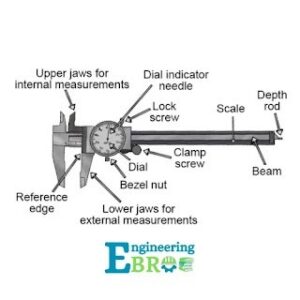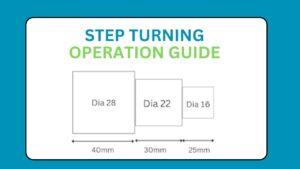What is the Least Count of Measuring Instruments?
“The least count of measuring instruments is the smallest value that can be measured or displayed by the instrument.” It represents the precision and accuracy of the instrument and determines the level of detail in measurements.
For example, a ruler with a least count of 1 millimeter can measure lengths to the nearest millimeter, while a ruler with a least count of 0.1 millimeters allows measurements to the nearest tenth of a millimeter. The smaller the least count, the more precise the measurements that can be obtained using the instrument
Table of Contents
List of least count of measuring instruments:
Please note that these values are commonly used as least counts for the respective instruments and may vary in special cases or specific models.
Instrument | Least Count |
Digital Caliper | 0.01 mm |
Vernier Micrometer | 0.001 mm |
Vernier Depth Gauge | 0.02 mm |
Vernier Height Gauge | 0.02 mm |
Electronic Height Gauge | 0.001 mm or 0.0001 mm |
Glass Scale | 0.1 mm |
Steel Scale | 1 mm |
Bevel Protractor | 5′ (5 seconds) |
Depth Micrometer | 0.01 mm |
Digital Protractor | 0.1 degree |
Pressure Gauge | 1 bar |
Digital Pressure Gauge | 0.01 bar |
Pressure Calibrator | 0.001 bar or 0.0001 bar |
Laser Interferometer | 0.1 nm (nanometer) |
Dial Gauge | 0.01 mm |
Measuring Tape | 1 mm |
Follow us on social media FACEBOOK .

Introduction:
In the field of metrology and precision measurement, the concept of least count plays a crucial role. The least count refers to the smallest measurable increment or division on a measuring instrument. Understanding the least count is essential for accurate and precise measurements.
In this blog post, we will delve into the significance of least count in measuring instruments and explore its implications in various fields. Let’s explore how the least count affects measurement accuracy and why it is a vital consideration when selecting and using measuring instruments.
Importance of Least Count of Measuring Instruments
Accurate and precise measurements are crucial in various fields, including engineering, science, manufacturing, and research. The least count of a measuring instrument directly impacts the accuracy of the measurements obtained.
Instruments with a smaller least count offer higher precision, allowing for more detailed and reliable measurements. Conversely, instruments with a larger least count may introduce more significant measurement uncertainties. Therefore, understanding the least count and its implications is essential for obtaining reliable data and ensuring the quality of measurements.
Factors Affecting the least count of measuring instruments :
Several factors influence the least count in measuring instruments. Some key factors to consider include:
- Instrument Design:
The design and construction of the measuring instrument play a significant role in determining its least count. Instruments with higher precision often incorporate finer divisions, advanced mechanisms, or digital displays to achieve smaller least counts.
- Sensitivity:
The sensitivity of an instrument refers to its ability to detect small changes or variations. Instruments with higher sensitivity can measure smaller increments, resulting in a smaller least count.
- Resolution:
The resolution of a measuring instrument is closely related to its least count. Higher resolution instruments can discern smaller increments, leading to a smaller least count.
- Calibration:
Regular calibration ensures the accuracy and reliability of measuring instruments. Calibration processes can help identify and correct any errors or deviations that may affect the least count and overall measurement accuracy.
Applications of Least Count of Measuring Instruments
The concept of least count is relevant across various types of measuring instruments. Here are a few examples:
- Vernier Caliper:
Vernier calipers are widely used for linear measurements. The least count of a vernier caliper depends on the number of divisions on the vernier scale and the main scale. By aligning the scales, users can read measurements with a high level of precision. therefore the least count of vernier caliper is 0.02mm
- Micrometer Screw Gauge:
Micrometer screw gauges are commonly used to measure small distances or thicknesses. The least count of a micrometer screw gauge is determined by the pitch of the screw and the number of divisions on the thimble scale.
- Digital Multimeter:
Digital multimeters provide electrical measurements such as voltage, current, and resistance. The least count of a digital multimeter is typically defined by the resolution of its display, which determines the smallest increment it can measure accurately.
Conclusion to least count of measuring instruments :
Understanding the concept of least count is essential for anyone working with measuring instruments. The least count determines the precision and accuracy of measurements and plays a crucial role in various fields, including engineering, and science
check out our more informative blogs engineeringbro



